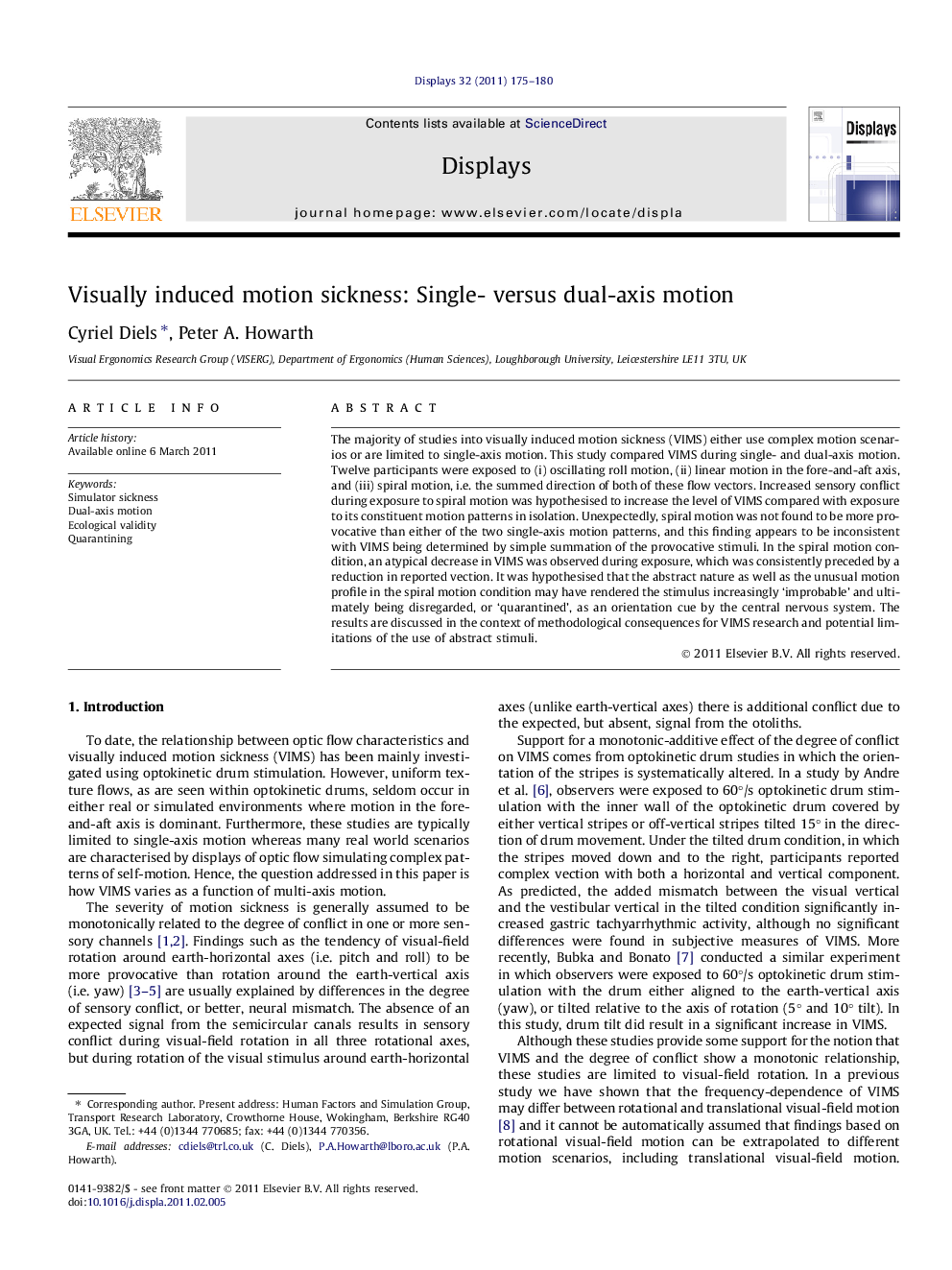| کد مقاله | کد نشریه | سال انتشار | مقاله انگلیسی | نسخه تمام متن |
|---|---|---|---|---|
| 537894 | 870935 | 2011 | 6 صفحه PDF | دانلود رایگان |

The majority of studies into visually induced motion sickness (VIMS) either use complex motion scenarios or are limited to single-axis motion. This study compared VIMS during single- and dual-axis motion. Twelve participants were exposed to (i) oscillating roll motion, (ii) linear motion in the fore-and-aft axis, and (iii) spiral motion, i.e. the summed direction of both of these flow vectors. Increased sensory conflict during exposure to spiral motion was hypothesised to increase the level of VIMS compared with exposure to its constituent motion patterns in isolation. Unexpectedly, spiral motion was not found to be more provocative than either of the two single-axis motion patterns, and this finding appears to be inconsistent with VIMS being determined by simple summation of the provocative stimuli. In the spiral motion condition, an atypical decrease in VIMS was observed during exposure, which was consistently preceded by a reduction in reported vection. It was hypothesised that the abstract nature as well as the unusual motion profile in the spiral motion condition may have rendered the stimulus increasingly ‘improbable’ and ultimately being disregarded, or ‘quarantined’, as an orientation cue by the central nervous system. The results are discussed in the context of methodological consequences for VIMS research and potential limitations of the use of abstract stimuli.
► Dual-axis visual field motion was not found to be more provocative compared with single-axis motion.
► An atypical average decrease in VIMS was observed during exposure to dual-axis motion.
► This is explained by the abstract nature and unusual motion profile in the dual axis condition.
► Unusual and unnatural optokinetic stimuli may be disregarded as an orientation cue by the CNS.
Journal: Displays - Volume 32, Issue 4, October 2011, Pages 175–180